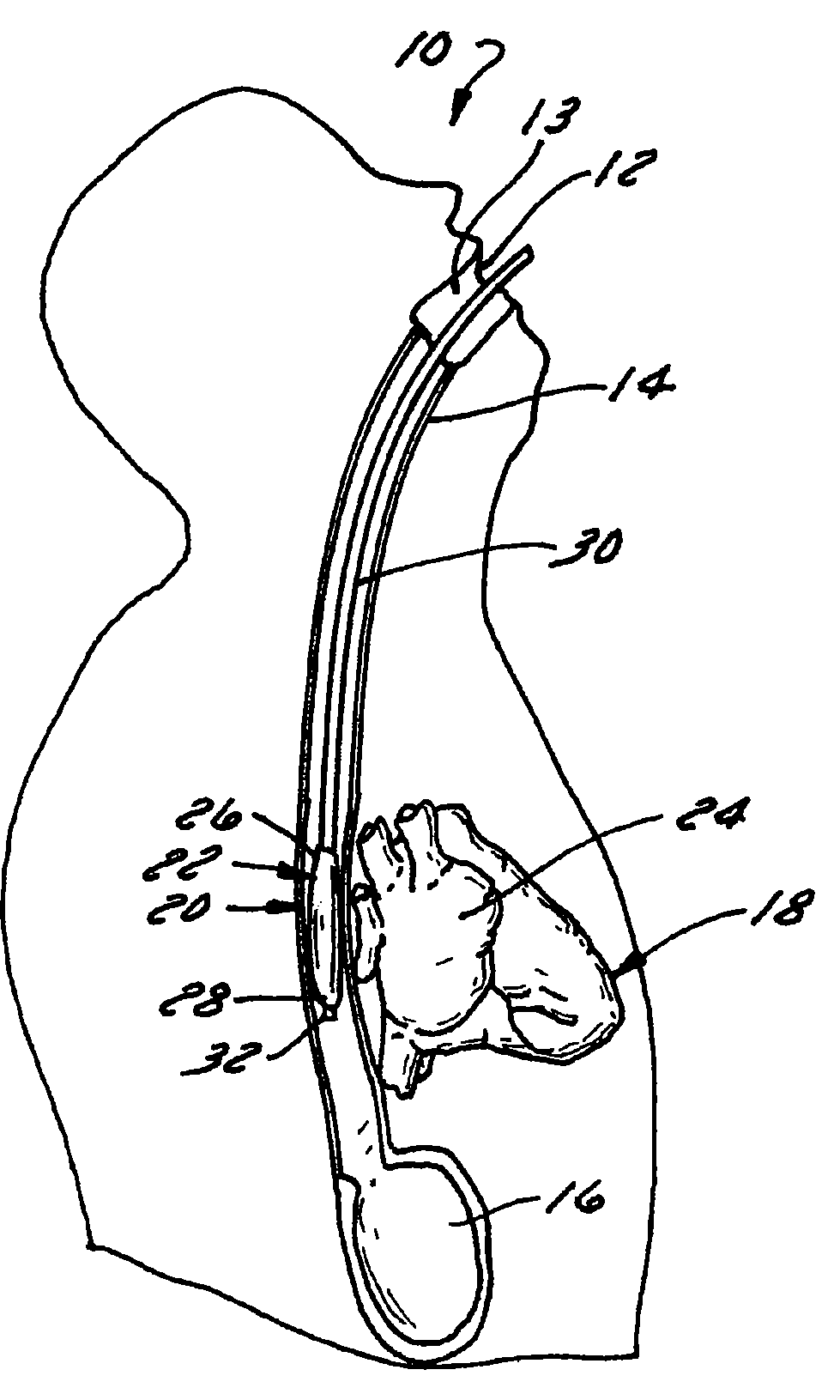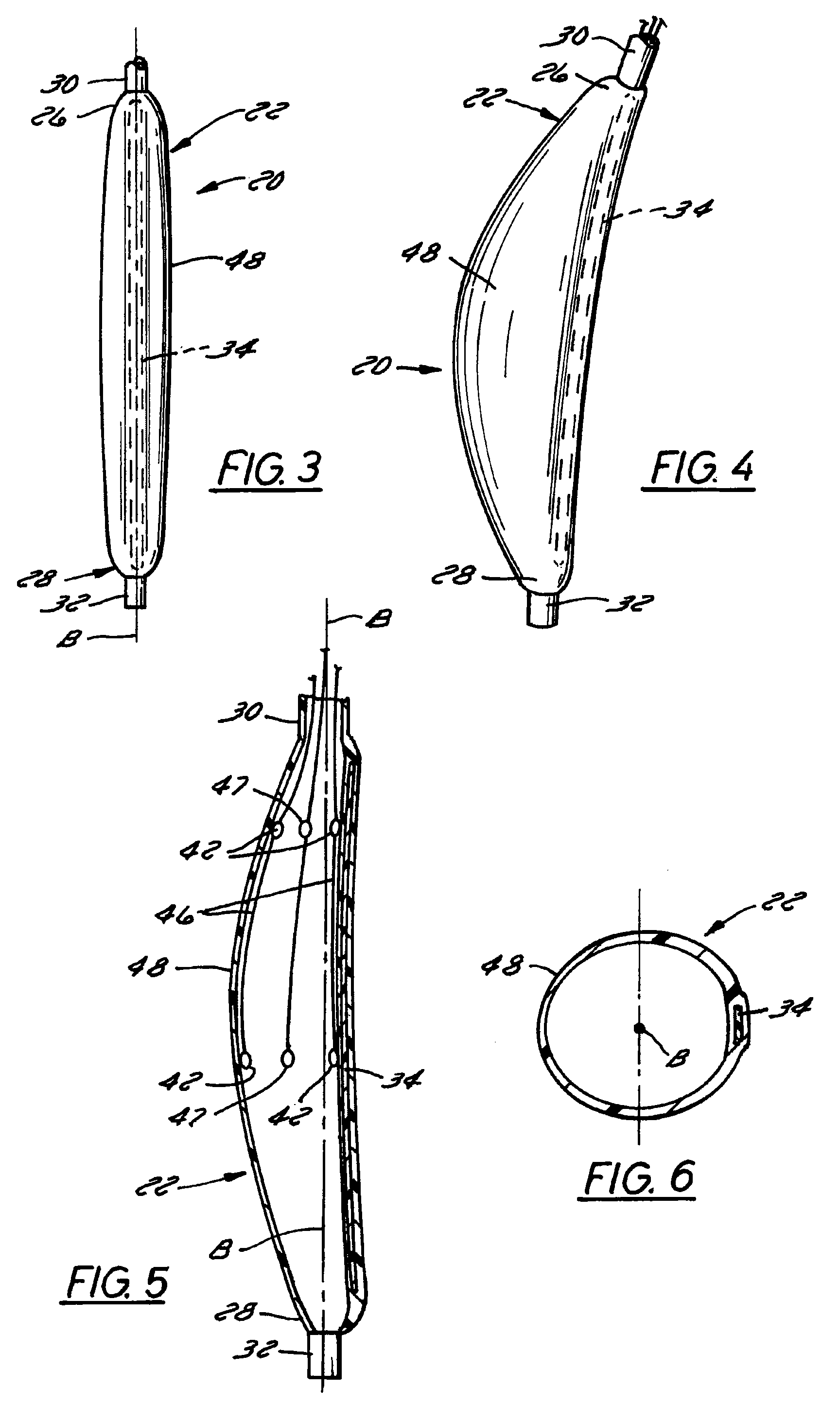Intra-esophageal balloon system
a balloon system and intraesophageal technology, applied in balloon catheters, dialysis, surgery, etc., can solve the problems of increased morbidity and mortality, increased atrial fibrillation, general decrease in quality of life of those afflicted with atrial fibrillation, etc., to prevent recurrent atrial fibrillation and safe perform left atrial fibrillation ablation
- Summary
- Abstract
- Description
- Claims
- Application Information
AI Technical Summary
Benefits of technology
Problems solved by technology
Method used
Image
Examples
Embodiment Construction
[0029]Referring now to the drawings, and initially FIG. 1, a schematic illustration of a portion of the internal organs of a patient 10 is provided with an intra-esophageal balloon system 20 constructed in accordance with a preferred embodiment of the invention inserted therein. Patient 10 has a mouth 12 leading to the esophagus 14, which then terminates at an opening of the stomach 16. The esophagus 14 is in close proximity to patient's heart 18, placing the esophagus at risk to injury during left atrial ablation.
[0030]The intra-esophageal balloon system 20 is inserted through the patient's mouth 12 and oral cavity 13 and into the esophagus 14. In particular, a balloon 22 of the system 20 is positioned within the esophagus 14 at a point substantially lateral to a left atrium 24 of the heart 18. Balloon 22 comprises a proximal or upper end 26 and a distal or lower end 28 opposite proximal end 26. Proximal end 26 is interconnected with a tube 30 that extends upwardly through the esop...
PUM
 Login to View More
Login to View More Abstract
Description
Claims
Application Information
 Login to View More
Login to View More - R&D
- Intellectual Property
- Life Sciences
- Materials
- Tech Scout
- Unparalleled Data Quality
- Higher Quality Content
- 60% Fewer Hallucinations
Browse by: Latest US Patents, China's latest patents, Technical Efficacy Thesaurus, Application Domain, Technology Topic, Popular Technical Reports.
© 2025 PatSnap. All rights reserved.Legal|Privacy policy|Modern Slavery Act Transparency Statement|Sitemap|About US| Contact US: help@patsnap.com



